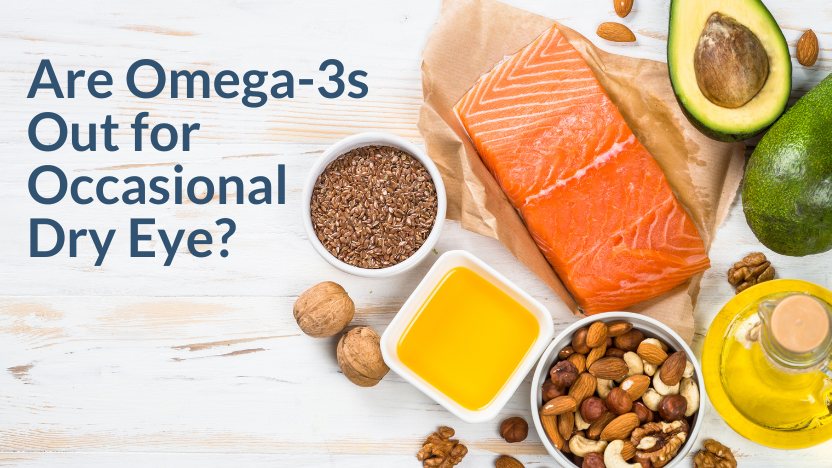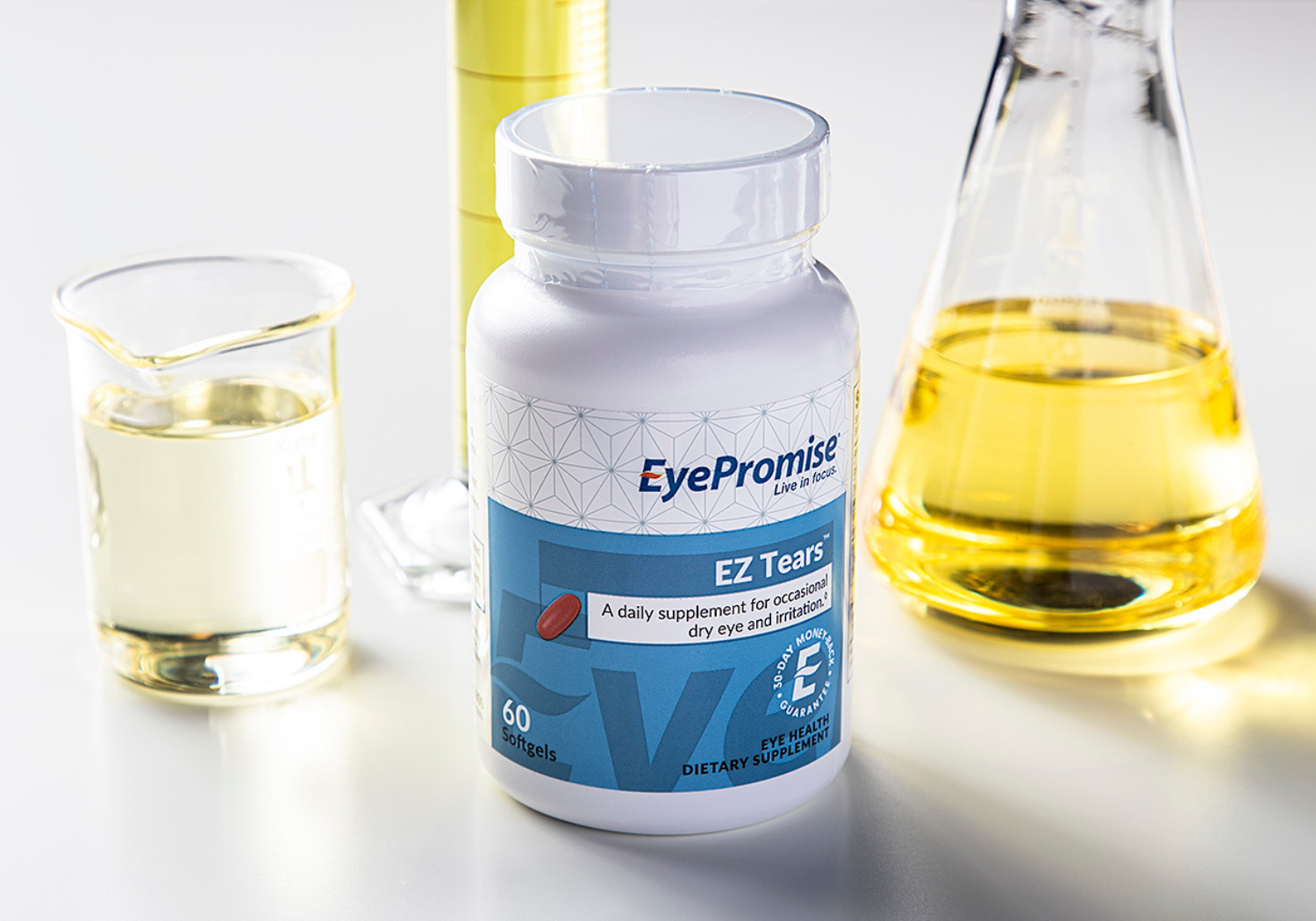Are Omegas Out for Occasional Dry Eye?
Posted by EyePromise on Nov 7th 2024
For over a decade, drops and Omega-3s were the classic prescription for patients with occasional dry eye. However, certain trials have brought these powerful nutrients into question, causing many eye care professionals (ECPs) to review or even change their occasional dry eye protocol. Julie Poteet, OD, MS, CNS, FOWNS, shared her recommendations regarding Omega-3 prescription for occasional dry eye in an article for Optometric Management.
Modalities of Occasional Dry Eye

First, Dr. Poteet reviewed the modalities of occasional dry eye. The Dry Eye Workshop (DEWS) II established that occasional dry eye is “a multifactorial disorder of the tears and ocular surface.” The hallmark symptoms of this disorder include:
- Discomfort
- Tear film instability
- Increased osmolarity of the tear film
- Ocular surface swelling
- Visual disruption (e.g., blurred vision)
The tear film along with the eyelid, glands, and other adnexa are all part of the ocular surface ecosystem working to keep the eyes hydrated and happy. This ecosystem must function properly and in an integrated fashion for the eyes to find homeostasis, but the stability of the ocular surface also depends on the environment, systemic health, and medications.
Omega Supplements

Omega-3 supplements have been around for years, and they’ve been a common prescription for patients experiencing occasional dry eye. Clinical trials have demonstrated the power of these nutraceuticals for reducing ocular surface discomfort and swelling, increasing tear film quality, and more. In fact, a 2023 meta-analysis looked at 19 randomized, placebo-controlled studies that put Omega-3 intake and occasional dry eye relief to the test. The authors of the meta-analysis found the occasional dry eye symptoms were improved with statistical significance in:
- OSDI scores
- Tear break-up time
- Schirmer testing
- Osmolarity
- Corneal fluorescein staining
What About the DREAM Study?
While there are many studies that demonstrate the positive outcomes of Omega-3 nutraceuticals, there is one trial that sent waves through the eye care industry. The Dry Eye Assessment and Management (DREAM) Study conducted in 2018 was a multi-center, double-masked, randomized controlled trial of more than 500 patients, and its findings caused ECPs across the country to question their protocols.
The study found that Omega-3 nutraceuticals had no more benefit than placebo for relieving occasional dry eye. These findings have caused and continue to cause confusion for ECPs and patients alike, and many practitioners have changed the way they practice as a result. While these results come from a credible source, it’s important to consider:
- The choice of olive oil as a placebo may have influenced the data, as it contains phytochemicals that have proven health benefits, or “therapeutic effect.”
- The choice to make the study “real-world” may have also influenced the outcomes, as patients were allowed to continue their current occasional dry eye therapies which leads to questions on which solution is actually helping.
The Importance of High-Quality Fish Oil

Dr. Poteet feels like Omega-3 supplements can be a good solution for patients, but she cautions her fellow ECPs about lower quality fish oils. A recent study found that 68% of flavored and 13% of unflavored popular Omega-3 supplements brands exceeded the total oxidation value (TOTOX) upper limit. This limit is set by the Global Organization for EPA and DHA Omega-3s (GOED), a global trade group that represents Omega-3 manufacturers. This means that these brands were rancid, which is known to contribute to inflammation vs. resolve it.
What Can You Do for Your Patients?
As an ECP, your patients look to you for your guidance and expertise. When recommending a nutraceutical, make sure that the product you choose provides the highest quality fish oil. Some indicators include:
- Third-party testing
- Ultra-refined purification process
- FDA Current Good Manufacturing Practice (cGMP)
- Money-back guarantees
- Lower pill count – with a lower pill count, you can be confident you’re receiving Omega-3s with higher potency, and the product has less time to be exposed to oxidation.
Furthermore, patients likely require more than Omegas to find lasting relief from occasional dry eye. Dr. Poteet shared that "Recent clinical trials have shown that multi-ingredient formulations of nutrients that act synergistically can also improve ocular symptom severity and tear production in patients with [occasional dry eye]." When it comes to nutrition, the whole is often greater than the sum of its parts. That’s where EyePromise® EZ Tears™ comes in.
EyePromise EZ Tears
EyePromise EZ Tears is an occasional dry eye formula crafted with high-quality fish oil with highly potent Omega-3s. In a 2-a-day dosage, EZ Tears delivers fish oil that’s 70% Omega-3s versus the typical 40%-50% found on most retail shelves. Our highly concentrated fish oil is sourced from the oceans of Chile and put through a patented purification process to ensure quality and freshness. Certified for Responsible Sourcing, Friend of the Sea, and Dolphin Safe, these Omega-3s are as good for the environment as they are your eyes.
EZ Tears is more than Omega-3s. Its formulation includes 8 soothing ingredients like gamma-linolenic acid (GLA), an omega not found in fish, flax, or the average diet. EyePromise EZ Tears provides the total nutrition needed to help relieve occasional dry eye.
Read the clinical trial behind the efficacy of EyePromise EZ Tears or have your local EyePromise Regional Account Manager contact you today!


